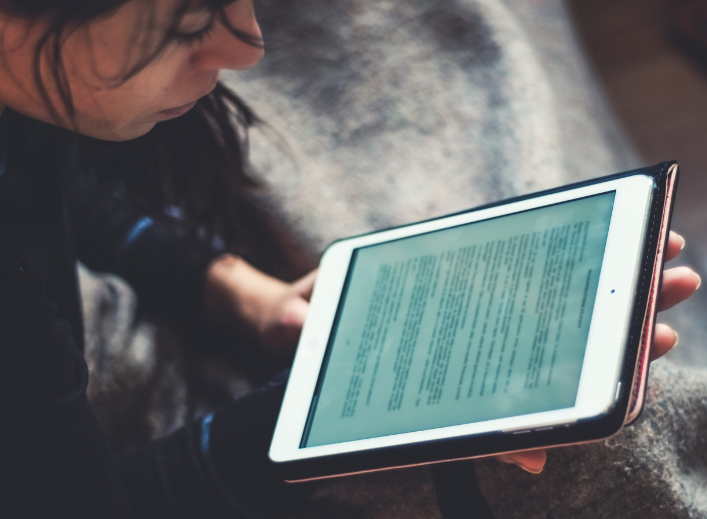A short introduction to digital reading didactics
When we use the word ‘reading,’ the physical book is often first thing we think about. There are many reasons for this, but we also need to realise that reading is now a days much more than just reading physical books. We read texts everywhere – not the least online. Reading digitally places other demands on students and thus also other demands on didactics.
This reading tip will look at various didactic aspects of digital reading.
The benefits of digital devices
One of the first points Henriette Romme Lund makes in her research project “Reading on digital devices” is that it is not the digital devices themselves that can in- or decrease the student’s learning, but rather how the device is used didactically.
One of the major benefits of digital devices is that the teacher is able to utilise the devices in relation to the academic teaching objectives. This requires an awareness of which strategies and processes one want to promote, and considerations of why, how and when to use analogue and digital devices.
Romme Lund makes some recommendations for how teachers can support students’ reading on digital devices. This includes:
Setting an example
Students can greatly benefit from observing and copying the teacher’s handling of reading on digital devices. It’s all about setting an example for students. Specifically, the teacher can show students how she would approach reading text on a digital learning portal. This type of reading is challenging as the texts we encounter on learning portals differ significantly from printed texts. For example, the teacher can point to the URL as an important place to find information about the sender of the text.
Furthermore, Romme Lund points out some of the most important differences between reading analogue and digitally. In analogue texts, students will encounter ordered and prioritised content that, by its very structure, co-creates a specific understanding or meaning. On the other hand, texts on digital devices provides many more opportunities/risks of being led away from the actual text. This happens, for example, via links, but also because often not all the text fit on the screen. In other words, digital text is much more dynamic and changeable.
Presenting digital reading
To deal with the challenges outlined above, Romme Lund recommends that the teacher organises the reading of the digital text in such a way that students must relate to:
- The content of the text
- The elements of the text
- The medium itself
Romme Lund suggests that this should happen before, during and after reading (read more about Romme Lund’s recommendations here).
Dorte Carlsen and Jens Jørgen Hansen’s book Digital Reading Didactics emphasise the reading guide as a powerful didactic tool. This reading guide is defined based on some fixed basic principles:
- The purpose of reading must be clear to the students.
- The guide should help students to read effectively.
- The guide should help students become active readers who can understand, apply and reflect on the texts they read.
- The guide should make students aware of the challenges of digital reading.
In continuation of the above basic principles, the importance of students being familiar with the purpose and activities of the reading guide is emphasised. In addition, Carlsen and Hansen emphasise that the reading guide works with what Ivar Bråten calls the four most important reading comprehension strategies. The four strategies are:
- Memory strategies
- Organising strategies
- Elaboration strategies
- Self-monitoring strategies
The reading strategies are important because they improve the individual reader’s understanding of the text. According to Carlsen and Hansen, a good reader actively engages with the text and uses a wide range of reading comprehension strategies.
Have fun with digital reading didactics.
Sources:
Carlsen, D., Hansen, J. J., et al (2015) Digital reading didactics. Akademisk Forlag.
Romme Lund, H. (2018) Reading on digital devices. National Knowledge Centre for Reading.

